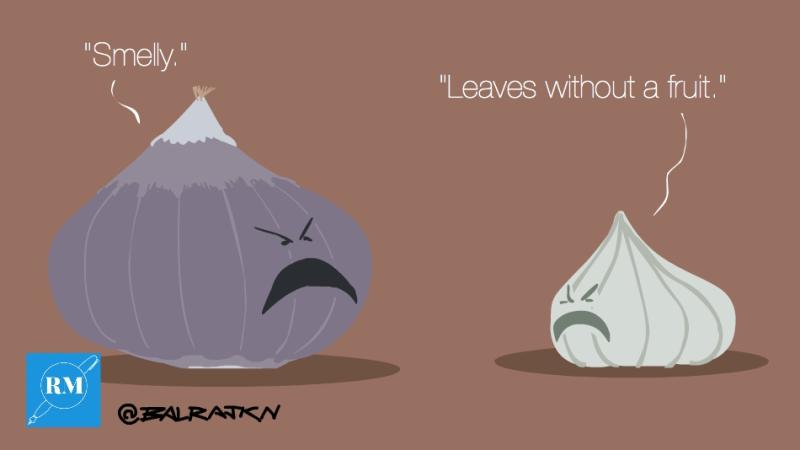
Onion (Allium cepa) and garlic (Allium sativum), belonging to the same genus ‘Allium’ has a lot of similarities in their chemical composition, but differ in their reactions. Almost every observable characteristic of these familiar vegetables can be attributed to a cascade of chemical reactions initiated by metabolites containing Sulfur.
Onion, notorious for its tear inducing ability, is quite fascinating. A special amino acid ‘isoalliin’ is stored in the mesophyll tissues of the onion. In proximity to this lie the vascular bundle sheath cells containing an enzyme ‘allinase’, along with other chemical components. When onions are cut, the two tissues rupture, leading to a contact between the chemicals - isoalliin and allinase. This, in turn, leads to the production of a powerful lachrymatory factor “E-thiopropanal-S-oxide”, causing the tears. Since this compound is vulnerable to water and has reduced volatility at low temperatures, chopping onions previously soaked in water or refrigerated for long, can take away those tears.
Garlic, on the other hand, is known for its peculiar odour and medicinal properties. It also contains a slight variant of the amino acid isoalliin, called ‘alliin’. Alliin, in presence of the enzyme allinase, becomes allicin, the compound responsible for the antibacterial properties of garlic. Diets including garlic reduces exposure to stomach ulcers since garlic inhibits the growth of Helicobacter pylori, the causative organism for stomach ulcers. Allicin undergoes a lot of chemical rearrangements to produce compounds like ‘ajoene’ which is known to possess powerful antithrombotic activity that inhibits platelet aggregation.





